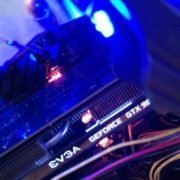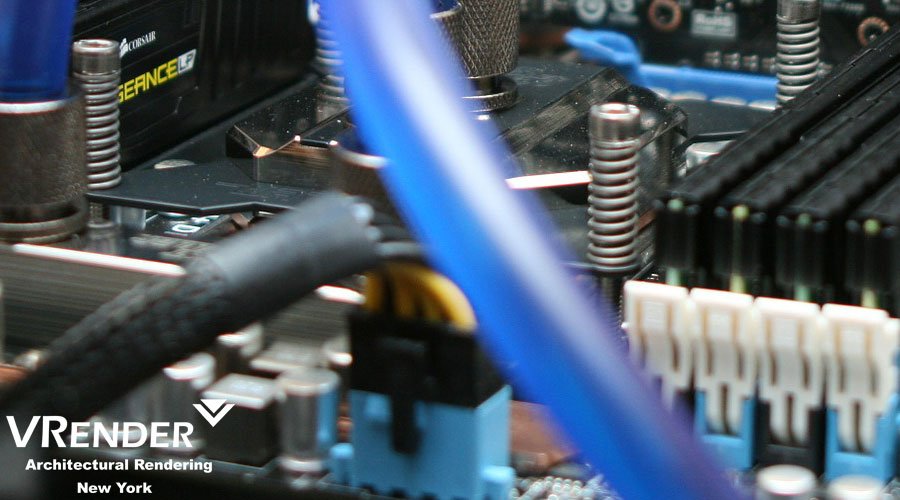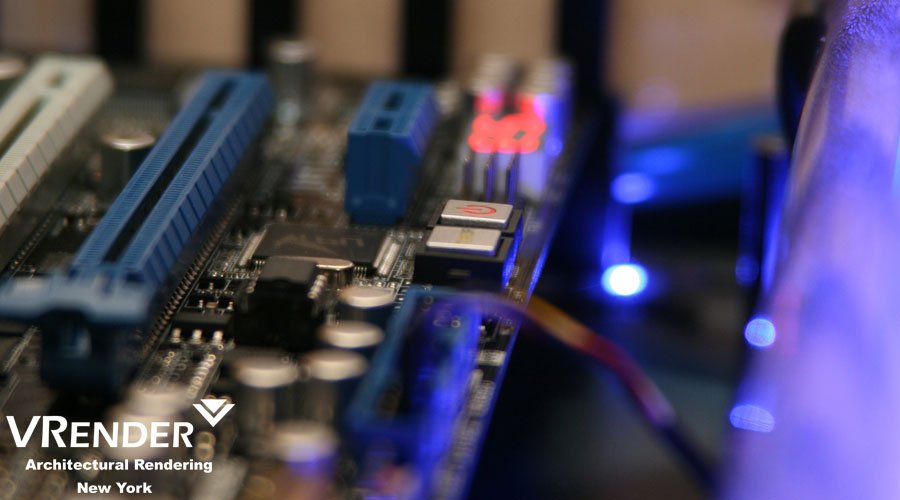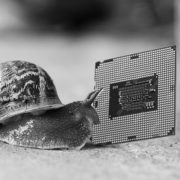Recommendations for choosing a computer for 3d Rendering in 2017
CPU selection for 3D visualization
Multi-core processor: the more cores, the better. From Intel processors, it is a family of Core i7:
| I7 7700K | I7 6800K | I7 6850K | I7 6900K | I7 6950X | |
| Technical processor | 14 nm | 14 nm | 14 nm | 14 nm | 14 nm |
| Cores | 4 | 6 | 6 | 8 | 10 |
| Streams | 8 | 12 | 12 | 16 | 20 |
| Frequency | 4.2 | 3.4 | 3.6 | 3.2 | 3.0 |
| Turbo | 4.5 | 3.6 | 3.8 | 3.7 | 3.5 |
| Cache | 8 MB | 15 MB | 15 MB | 20 MB | 25 MB |
| Powerfulness, in W | 91 | 140 | 140 | 140 | 140 |
| Cinebench R15 multi | 988 | 1132 | 1154 | 1486 | 2041 |
From AMD processors, it is Ryzen 5 and 7:
| 1500X | 1600X | 1700 | 1700X | 1800X | |
| Technical processor | 14 nm | 14 nm | 14 nm | 14 nm | 14 nm |
| Cores | 4 | 6 | 8 | 8 | 8 |
| Streams | 8 | 12 | 16 | 16 | 16 |
| Frequency | 3.5 | 3.6 | 3.0 | 3.4 | 3.6 |
| Turbo | 3.7 | 4.0 | 3.7 | 3.8 | 4.0 |
| Cache | 8 MB | 15 MB | 15 MB | 20 MB | 25 MB |
| Powerfulness, in W | 65 | 95 | 65 | 95 | 95 |
| Cinebench R15 multi | — | 1136 | 1419 | 1540 | 1628 |
The comparison shows that the AMD processor for the same money is faster in the rendering in 1.5 times! This does not mean that the Ryzen 7 processors are the best in everything. In single-streamed tasks, they give the same performance or worse at the same frequencies. But in 3D visualization, in the parameter of combining performance on one price unit, they go far ahead.
Video card for rendering
In some cases, rendering using the video card works much faster than the one done by the CPU. GPU rendering supports iRay, V-Ray RT, Cycles in Blender, and other visualizers.
Here, the two main competitors are AMD and NVIDIA again. The main difference is in the supported technologies as NVIDIA video cards use CUDA, while AMD video cards – OpenGL. So it always makes sense to find out in advance what exactly you will use. For example, VRay help section tells about the choice clearly: “It is highly recommended to use the CUDA engine on nVidia GPUs.”
I have the impression that there are fewer problems with NVIDIA video cards, so I propose to choose among them. The main criterion, besides the price, of course, is the number of CUDA cores – the more the better. There is no sense to overpay for a professional card for rendering – you will not get a real gain in the speed of rendering but you will lose a lot of money.
| GEFORCE GTX | 1050TI / 1050 | 1060 6 GB / 3 GB |
1070 | 1080 | 1080TI |
| CUDA of the core | 768/640 | 1280/1152 | 1920 | 2560 | 3584 |
| Frequency base | 1290/1354 | 1506 | 1506 | 1607 | 1480 |
| Frequency turbo | 1392/1455 | 1708 | 1683 | 1733 | 1582 |
| Memory | 4 GB GDDR5 / 2 GB GDDR5 | 6 GB GDDR5 / 3 GB GDDR5 | 8 GB GDDR5 | 8 GB GDDR5X | 11 GB GDDR5X |
| Memory base | 128-Bit | 192-Bit | 256-Bit | 256-Bit | 352-Bit |
| The pass. capability of the memory (Gb/s) | 112 | 192 | 256 | 320 | 484 |
| Consumed power, W | 75 W | 120 W | 150 W | 180 W | 250 W |
RAM
The standard memory is DDR4, the bigger volume the better. 8 Gb is the absolute minimum, while 16 Gb is optimally for the beginning. Further quality is up to taste and purse. In severe cases, it makes sense to add up to 32 Gb or more.
Hard Drive and SSD
They do not directly affect the rendering speed. I propose the following options:
- HDD – SATA-III, 7200, cash – the more the better; volume is 1 Tb.
- SSD – volume is 256 Gb and more. The speed of work is clearly defined by the capabilities of your purse.
Motherboard
It is selected strictly under the processor taking into account the dimensions of the case, the necessary number of any connectors like USB, sATA, for memory modules and so on. It is difficult to give any specific recommendations in advance.
New Article!
Best Computer Configuration for 3d Rendering and Animation in 2018
Vrender Company 2017.
- How to add perspective to architectural projects with digital 3D rendering help - December 24, 2023
- 3D Architectural Walkthrough Animation Services New York - April 24, 2019
- 3D Rendering Services in San Francisco, California - March 12, 2019










